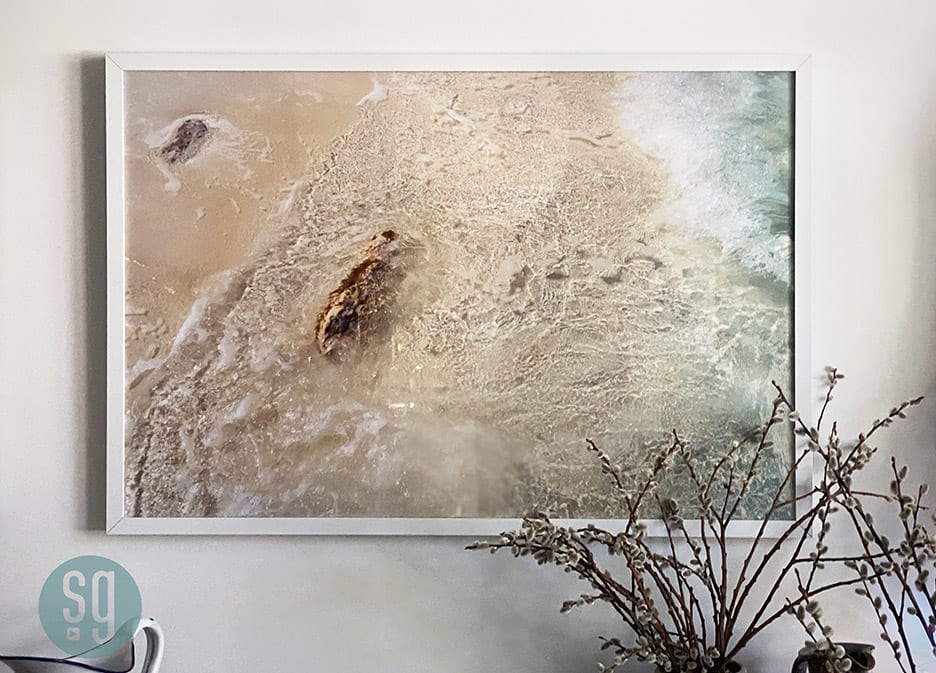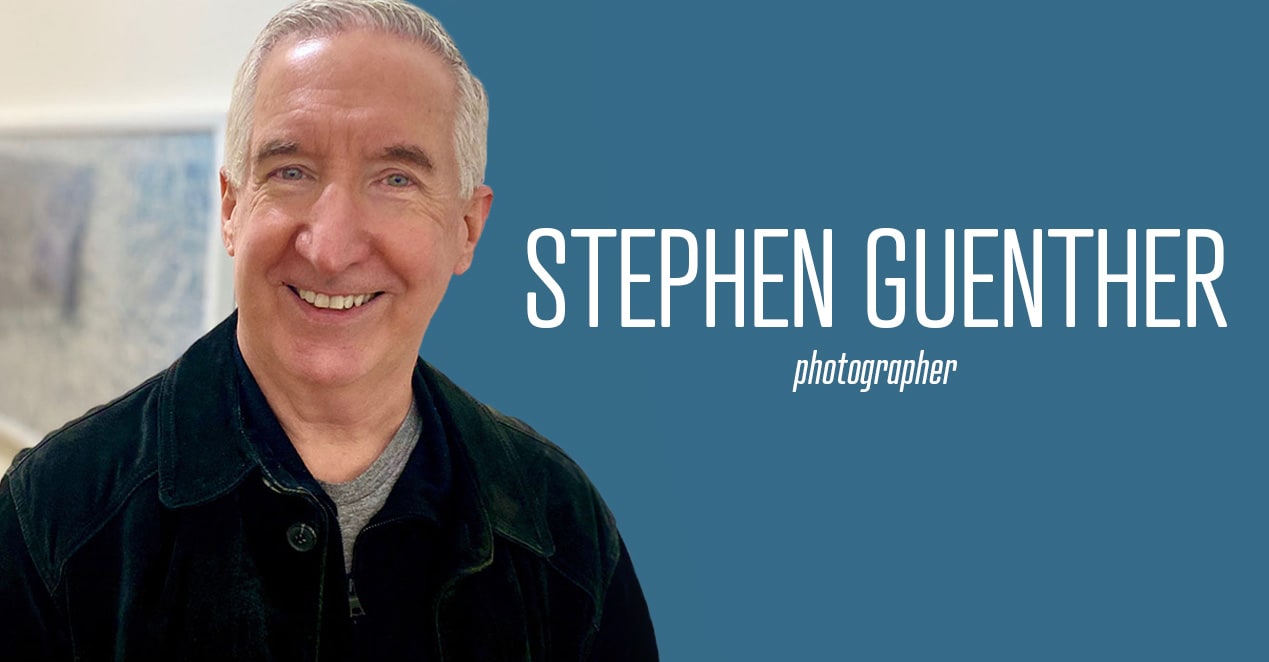Creative Instigator: Meet Photographer Stephen Guenther
From fine art to corporate films, Stephen Guenther considers himself a “creative instigator.” Titles like design director, film director, creative lead, and executive producer surely back that up. But before any of those roles, back in the 1970s, photography paved the way.
Darkroom Enlightenment
As an undergraduate student of Visual Psychology, Stephen tagged along with a friend who was developing film in a dark room. Watching the image come to life awakened a passion for the art, prompting Stephen to attend the Center for Photographic Studies under the instruction of C.J. Pressma. He describes that early training as “profound and lasting.”
Remnants of Reality
Stephen’s current work was born during the homebound days of covid. As he looked through a box of vintage printed images, he started seeing an “image within an image” — portions of the prints that could stand on their own. What ensued became a series of untitled works he calls “Remnants.” The featured photo above is from an image of the iconic Taos Church; the enlarged lithography dot pattern added to the abstract edge of the image, allowing him to present a unique vision.
The ocean wave piece below, part of the “Suiseki-Water-Stone” series, is framed in our white Nielsen Profile 95, an elegant aluminum frame. “Frame Destination not only has the products I need, but also the service,” says Stephen.

See More of Stephen’s Work
Stephen’s website is a treasure trove of still photography, featuring images from the Bahamas, Berlin, and beyond, as well as intriguing portfolio categories like “Texture” and “Fallen.” You can also peek at his motion work, comprising corporate and nonprofit efforts, like a touching video for the Rio Branco School for the Deaf in Sao Paulo, Brazil. Peruse his Instagram for “daily random fotos” and his 2023 Graphis Gold Award-winning image (see 1/9/23 post). To discover Stephen’s latest passion and what he experiences in lieu of creative blocks, scroll to the Q&A below.
Now for Artie’s Eight Q&A with Stephen Guenther…
- What is your background; how did you get started?
While in my last year of undergraduate study (Visual Psychology), I joined a friend working on a senior project in Architecture. It was there, in a darkroom, that the full weight of photography connected with me. The magic of the obfuscated image in the developing tray coming to life was the moment. My formal education in photography began at the Center for Photographic Studies in Louisville, Kentucky, where my first teacher was C.J. Pressma, a protégé of Henry Holmes Smith and Minor White. It was a profound and lasting experience. After that, my professional development led to a Masters in Fine Art in Photography. What came next was a 40-year career in graphic design, with my final role as design director for my own company. Filmmaking took over during this period as my visual skills were honed and applied as a director of both film and photography. Looking through the lens at the flow of motion was mesmerizing. I have spent the better part of the last decade traveling the globe to document NGO humanitarian projects, from education for children with disabilities in Andong, South Korea, to women weavers in Maheshwar, India. With 30+ years of photography experience, I remain committed to explore, to learn, and to help others find their path to self-expression and documentation via photography.
- How important is it for a photographer to "connect" with their subject?
Connection is a challenging word. I think that the photographer either has to recognize something or respond to something — consciously or unconsciously.
- What has been a formative experience or the best advice you’ve received within your career?
I’ve been greatly influenced by a quote from Minor White: "While we cannot describe its appearance (the equivalent), we can define its function. When a photograph functions as an Equivalent we can say that at that moment, and for that person, the photograph acts as a symbol or plays the role of a metaphor for something that is beyond the subject photographed."
- In what ways does your work reflect your personality?
That is not for me to say. The work speaks for itself.
- Creative blocks, do you get them? If so, how do you overcome them?
I suffer more from too many ideas and sometimes the lack of confidence to pursue them.
- What is your most indispensable tool? (Not counting the obvious, like paints, brushes, canvas, camera, etc.)
For me there was the joy of discovery in the recognition of something beyond the formal image. And recognition that there are multiple ways to “capture” an image. Alternative process, vintage historical approaches, other mechanical options as well.
- Do you have a new project you are working on, or a new passionate idea?
I have always connected to “straight” photography, but I started looking again at some favorite photographers, like Harry Callahan, who also explore multiple images or layered composite images. This gave me “permission” to step outside of my comfort zone and create a new series of composite images with fun and excitement in each step.
- What "fad" gadget do you most regret purchasing?
I am not seduced by equipment; I buy what I need at the time I need it.

All artwork and/or photographs used in this post are subject to copyright held by the featured artist.
ARE YOU READY FOR THE SPOTLIGHT? Simply respond to the questionnaire here to apply to be included in an upcoming Artie’s Eight Spotlight.
Last Updated March 29, 2023